Olive Harvest in Greece
Introduction
Olive harvest in Greece – Olive trees dot the landscape throughout Greece and are heavily entwined with the country’s culture. The ancient Greeks began pressing olives more than 5,000 years ago, and the olive oil produced here is considered some of the best in the world. Greek olives are handpicked, a job that requires the participation of the whole extended family. So close are Greeks’ ties to the land and to their olive groves that Greece is the only country in the European Union that gives its civil servants special leave for the olive harvest. Once picked, the fruit is placed in baskets or sacks and carted out of the field. Because most Greek olive groves are very old and the terrain in most cases mountainous, there are often few roads leading to and from the groves. Farmers sometimes have to resort to primitive means—mules and donkeys—in order to transport the fruit from field to mill. During the length of the harvest olive oil mills work around the clock. The ties between the farmer and the olive mill owner usually go back many years. This is another one of the beauties of olive oil in Greece—from field to mill there is always something personal in all the production stages: pride in the sturdy olive-laden trees of a particular grove, mutual understanding that picking has to get on as fast as possible, common pleasure of farmer and mill owner alike over a fresh batch of well-picked, healthy olives. The olives are pressed and their rich and delectable juice pours out of the spout, the traditional way of sampling the first young oil is to run a piece of toasted bread under it. Heated arguments are exchanged over its fruitiness, its mellowness, and its low acidity.
Brief History of Greek Olives

Olive tree cultivation and olive oil production has been with humankind since time immemorial, according to evidence that provide the artefacts and archaeological remains of the most ancient civilisations. The olive has been an integral part of life in the eastern Mediterranean from the first stirrings of civilization. There are stone mortars and presses used for olive oil extraction that date back to 5000 BC. Archaeological findings from the Minoan Palaces in Crete are fine examples of olive oil’s role in the Cretan or Minoan civilization, which reached its zenith between 2000 and 1450 BC.
Harvest Time
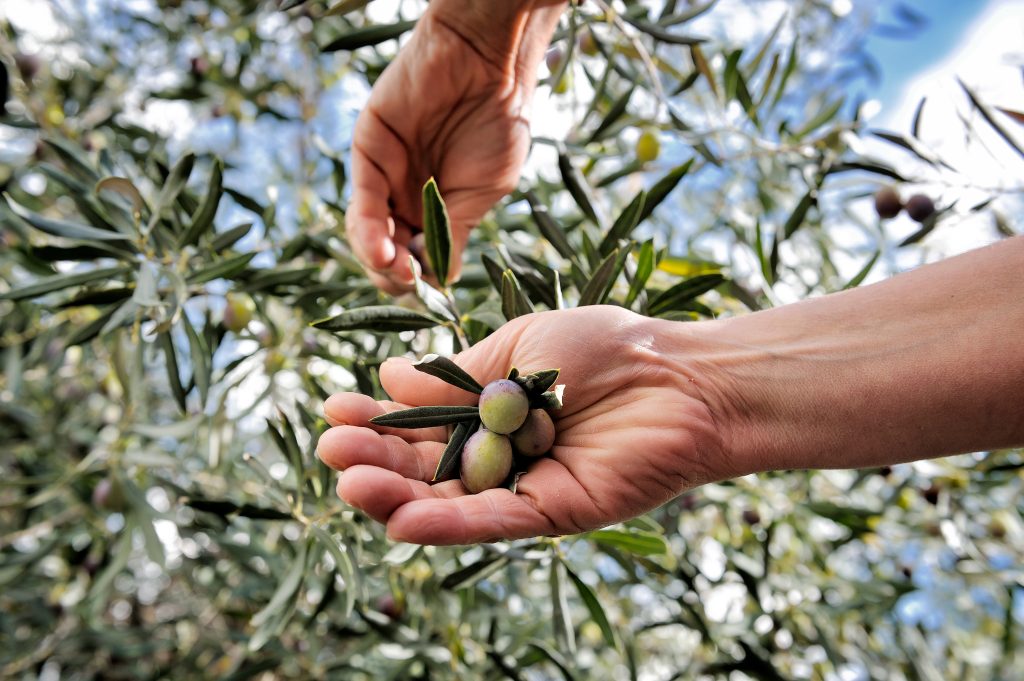
November signals the beginning of the olive harvest season which lasts until mid-January. Very few products are so linked with a place’s history and culture as olive oil and olive trees are regarding Greece’s cultural heritage. Endowed with strong symbolism through mythology and religion but also associated with gastronomy and a healthy diet, olive tree and its products are certainly a unique component of Greek and Mediterranean culture in general. Unique qualities of the Greek climate and soil are seminal to the ultimate quality of its olive oil, so too is the manner in which Greek olives are harvested and crushed. In some places, the olive harvest starts as early as October, when the fruit is still not fully mature. The oil from these green, unripe olives is called agourelaio, (“immature” olive oil). This oil is produced in small quantities and therefore in high demand. It is characterized by a strong peppery taste. Most olives are harvested starting in November, just as the fruit turns from greenish to purple-black. The best time to pick is when the fruit is three-quarters black. It is then that the best bouquet and lowest acidity are achieved. For travelers, it’s a wonderful opportunity to connect with nature, experience traditions and indulge in food-forward activities. It’s possible to visit the harvest and learn about the process, or even take part for a few days yourself. The oil is usually ready to sample after a few weeks, and local tavernas and producers will be keen to offer you a taste. The season is also a great time to explore Greece without the heat and crowds, and a trip to experience the harvest is easy to combine with other activities. Take advantage of the cooler temperatures and put aside some time for hiking and bike riding around the stunning mountains and coastlines that are found all over the country.
Common Greek Olive Varieties
Despite the abundance of olive groves now scattered across the world, in both the northern and southern hemisphere, most olive oil continues to come from the Mediterranean. The intricate nature of the olive tree is evident in the m any varieties of olives that exist. While color, size and composition may all point towards a certain variety, the maturity of the olive plays an important role as it affects both the taste and the oil produced. Additionally, some olives are suitable only as table olives and others are suitable only to produce oil.
Olive Varieties for Olive Oil
- Koroneiki : The “queen” of olives produces a high quality, low acidity and full-bodied extra virgin olive oil. The Koroneiki olive, picked while is still green, is highly prized for its aromatic, strong flavored oil, perfect for enjoying in its natural raw state or added at the end of cooking. These olives yield approximately 6 to 7 liters of the best olive oil which is golden-green in color and is highly acclaimed for its fruity and fresh flavor. The Koroneiki olive is mainly presented in the south Peloponnese and in some areas of Crete. Kalamata PDO is one of the finest extra virgin olive oil that comes from Koroneiki variety.
- Athinolia : Athinoli a is a variety of olive that matures slowly and is collected from the end of December until the beginning of January. Its fruit h as a medium size oval shape, with a weight of 2.2 to 2.9 grams and a length that can vary from 7.5 to 25 millimeters. When Athinolia and Koroneiki olives are mixed they produce a full-body extra virgin olive oil of a balanced and intricate fruity flavor.
- Manaki : Manaki is another olive variety that matures slowly. This olive variety thrives in very high altitudes. The harvest period is from the end of October until the beginning of January. Its fruit has an oval shape and is relatively small. The taste of olive oil that comes from this fruit is softer and its aroma reminds ripe fruits like apple and tomatoes.
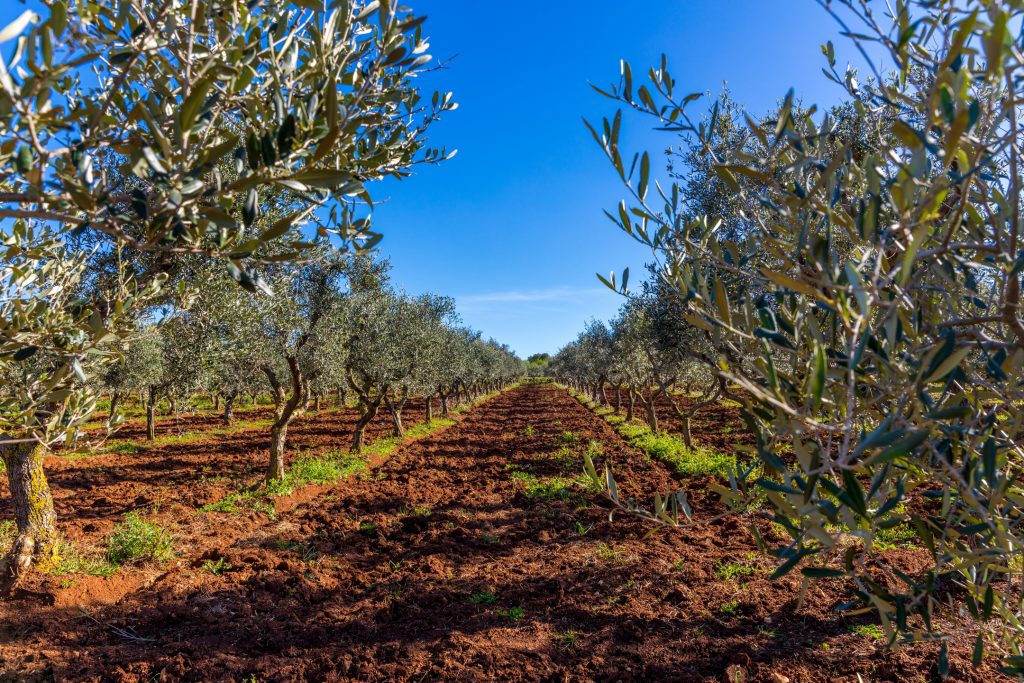
Olive Varieties for Table Olives
- Kalamata Olives : Kalamata olives are named after the city of Kalamata in Messenia, southern Greece and are also grown in the nearby region of Laconia. They are almond-shaped, with a rich dark purple color, smooth and meaty in texture and are harvested by hand only when they fully ripe to protect their sensitive skin against bruising. They are marinated in salt brine and immersed in olive oil and wine vinegar to acquire a characteristic light fruity flavor and sweetness. These olives are protected under the European Protected Geographical Status scheme.
- Green Olives: Green olives come from variety of Chondrolia in Chalkidiki, a region in Northern Greece. They feature large sized berries, bright green yellow color and slightly bitter taste while they lack in grassiness. They are harvested by h and between 15 September to 15 October and after pitting they are re-evaluated in large tanks, so that only the best berries will be used.
- Black Olives: Black olives come from the region of Amfissa. They are a typically Greek type of olive which has been allowed to fully ripen on the tree before harvesting. Their black color is a result of natural ripening – no artificial added. The distinguishing characteristic is the lack of lye in the de-bittering process. Their color varies from red-violet-black to purple and deep black and their taste is fleshy and slightly fruity.
Regions
Greek olive oil is of supreme quality and its uniqueness lies, to a great extent, in the climate that the olives are cultivated in. Like wine, which absorbs the aromas from other elements it comes in contact with, the olive oil too is influenced by its surroundings. About 65 per cent of Greece’s olive oil comes from the Peloponnese, while the rest is produced mainly in Crete, the Aegean and the Ionian Islands. Natural fertilizers are also considered to be a key ingredient. Olive trees can survive without constant irrigation, they complete their own growing cycle and are quite resilient to climate change.
Southern Peloponnese
Any olive-themed trip wouldn’t be complete with a visit to Kalamata. The city, which is situated in the ancient Messina district, gives its name to the famous brown olive variety. The Peloponnese is a largely rural region, and many households here rely on olive farming for their incomes. The region features centuries-old, organically farmed Koroneiki olive groves, which are carefully harvested by hand each year and are renowned for their low acidity. The result is the award-winning Navarino extra-virgin olive oil. Visitors can learn all about Messinian agricultural and culinary traditions, following each step of the olive’s journey and visiting a nearby olive-oil mill. For a really immersive food experience, you can combine the harvest with wine and cookery courses, plus there are plenty of options for wellness and outdoor activities, from golf to yoga. Be sure to also take a day trip to Kalamata’s famous farmers market, packed full of mouth-watering local produce.
Northern Peloponnese
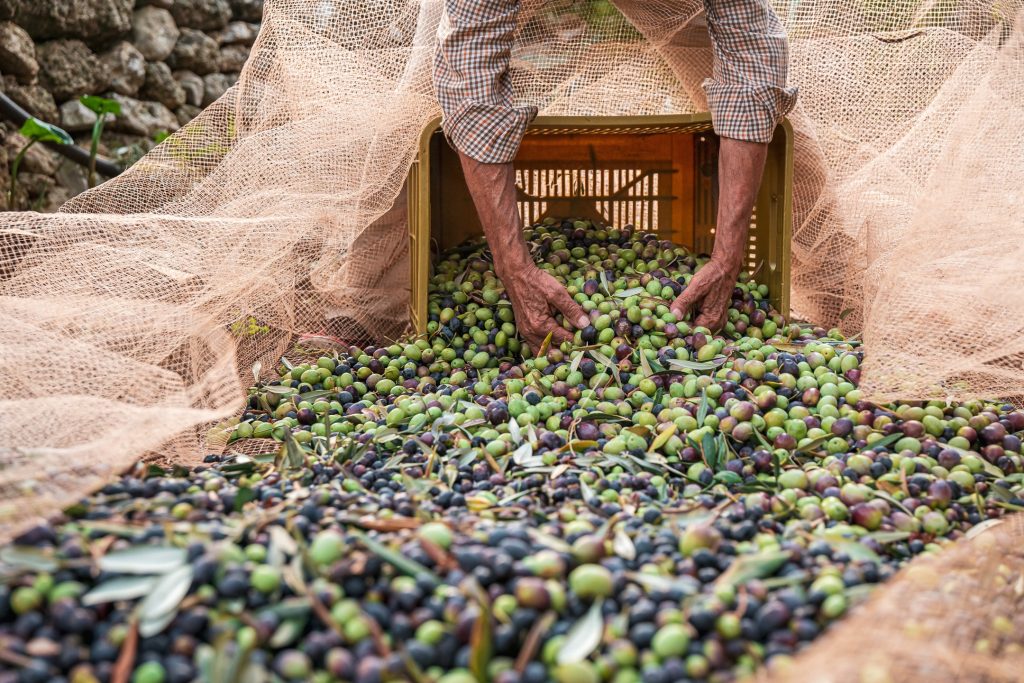
Many visitors to Athens make the two-hour trip to the northern Peloponnese to check out the ancient ruins of Corinth or the serene beach life of Nafplio. But it’s also worth making the journey to learn more about rural Greek life. Each village in this region has its own farming tradition, from shepherding to orange growing. To experience a modern olive-farming village, head to Prosymna, where every family owns a field — or several.
Crete
Greece’s largest island is one of Europe’s best food destinations. The Cretan climate means produce stays in season here longer than in any other part of Greece, and the region is known for its unique dishes such as dakos (rusks with tomato and feta) and fried snails. To experience the olive culture, get away from the beach and head into the mountains, where fields of olive groves stretch for miles. Some producers, such as Biolea, allow tours of their mills combined with tasting sessions.
Lesvos
The east Aegean island of Lesvos was famous for supplying the rest of Europe with high-quality olive oil through the 19th century. Today you can learn all about the industry’s history at The Museum of Industrial Olive-Oil Production, situated in the center of the island. And don’t miss sampling the wares of small-scale producers, such as cooperatively owned Modousa.
Cyclades
The blue-and-white houses of the Cycladic Islands are one of Greece’s most iconic sights. On the island of Naxos you can join in with the Annual Feast of Traditional Olive Oil Extraction, which takes place between late January and early February. Hosted in the village of Damalas, it features traditional local foods, wine and music. The discovery of petrified olive leaves in Santorini of an estimated 50,000 to 60,000 years of age as well as archeological findings from the Minoan Palaces in Crete proving olive oil’s role in the Minoan civilization, illustrate the long-lasting role of this “blessed fruit” in the Greek civilization. The myth that Athenians chose goddess Athena over Poseidon because she offered them as a gift the olive tree, a source of life that would provide them with food is a well-known Greek ancient myth.
Zante
Olive Oil has been the main agricultural product of Zakynthos Island for hundreds of years. In Zakynthos today, there are 8500 families of farms 3,000 of which have farming as their only source of income. From the 100,000 acres of arable land, the 1000 are olives groves which are commonly referred to as “liostasia” There are approximately 1,700,000 olive trees in Zante. The average annual production of olive oil in Zakynthos is 6,000 -8,000 tons. The Zakynthians are tightly bound to their land, the natural environment, rural life and oil cultivation and production. During the oil picking period “liotrivi” in autumn and winter, the locals experience a traditional ritual. Olive oil is for us: Our present, our past and our future
The Olive Harvest Process
The making of the olive oil in Greece is a fascinating process and the olive harvest is considered an important time of year. In the past but also nowadays olive harvest has been an activity mainly carried out by families as many olive groves are maintained for personal use. Of course, big agricultural units exist equally applying modern techniques, when it comes to olive harvest, production of olive oil and promotion activities. Traditional harvest process begins with collecting olives by hand to ensure that no damage is done to the tree and to the olives after placing long nests on the ground around the trees. The olives are then placed in large sacks and transported to an olive press where they are laid on a conveyer belt, washed and separated from the leaves. In ancient and old times, the olive oil press consisted of two millstones, put in motion by large wooden handles pushed by men or donkeys, pressing the olives and turning them into paste and then into oil.

Today electrical machines are used to shake down the trees and the millstones have been replaced by modern mechanized presses, although some olive presses still use the stone-grinding method with the only difference that movement of the mills is now electricity powered. The pressed by stone is considered to create a more complex and healthier end product because this centrifugal action maintains the vitamins and the Phyto-antioxidants. Traditional olive harvest has also been included in agro-tourism as it is a perfect interactive holiday choice and over the years olive harvest activities have become a popular trend in Greece for outdoor enthusiasts. This a perfect opportunity to witness the whole harvest process and to master age-old harvesting techniques. Visitors are participating in olive collection and they can watch the liquid gold tickle down the pipes harvesting the fruit of their labor.
Greece Olive Oil Production
Greek olive oil products are considered top quality worldwide. They are cultivated in the country’s ideal climate and soil varieties. An 80 per cent of Greece’s olive oil is extra virgin, which is the top-ranked classification category in the world. There are literally hundreds of local varieties and tastes, including a number of organic producers which are positioning in the global high-value market with specialty and luxury oils. Greece is the third largest olive-oil producing country in the world, after Spain and Italy, producing more than 200,000 tones. According to available EU data Greece ranked fourth in 2018 among EU Member States after Spain, Italy and Portugal in extra-EU exports of olive oil i.e. in exports to the rest of the world. It should though be mentioned that large quantities of Greek olive oil are headed to Italy and Spain every year without being counted as exports as all EU Member States are part of the European single market that refers to the EU as one territory without any internal borders. Traditional olive harvest has also been included in agro-tourism as it is a perfect interactive holiday choice and over the years olive harvest activities have become a popular trend in Greece for outdoor enthusiasts. This a perfect opportunity to witness the whole harvest process and to master age-old harvesting techniques. Visitors are participating in olive collection and they can watch the liquid gold tickle down the pipes harvesting the fruit of their labor.
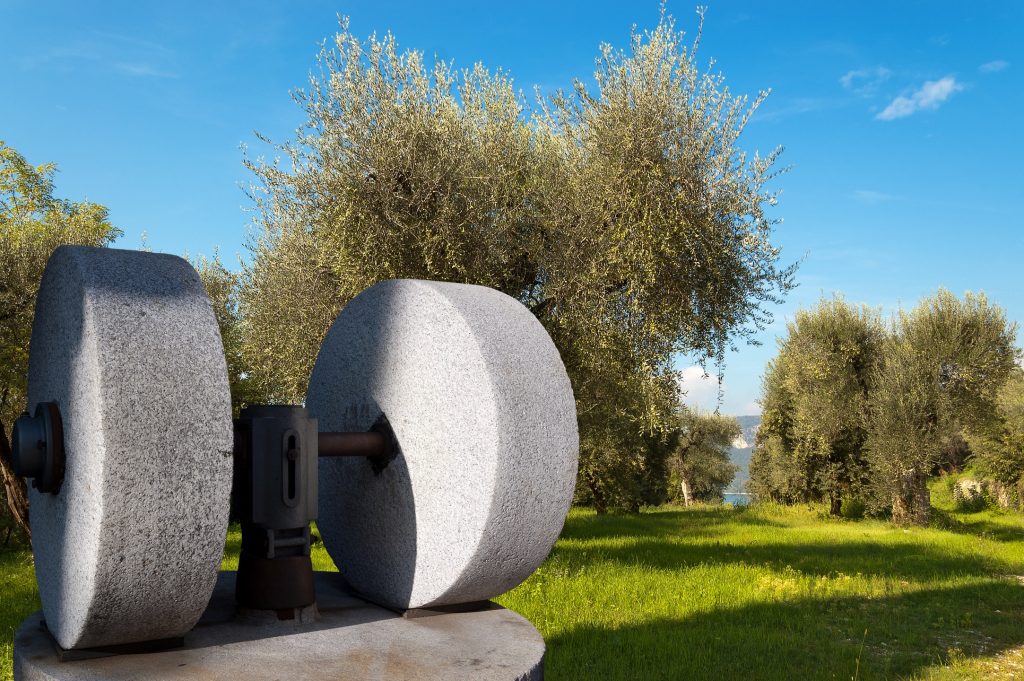
Greek Olive oil and oleaginous products are amongst the most famous agricultural products of the country while the mainly small sized but dynamic Greek companies are investing time, effort, resources and creative thinking into making the best usage of their product. Using innovative farming techniques but also modern marketing tools reinforcing their product’s aesthetic appeal Greek companies are trying to gain their position in the global market. Τhe “Art of Greek Olive Oil” is gaining a lot of ground internationally, with remarkable reactions from consumers and businesses, but also with an array of awards won in international competitions for the quality of Greek products and their sophisticated packaging. Apart from olive oil, olives themselves can be consumed as snack or be used in salads, breads, pies or sauces as table olives. In this case different varieties of olives such as black Kalamata olives or juicy Amfissas olives are used. Olive oil is also used in soap manufacture as base for soap, since the antiquity. Olive oils soap is very mild, long-lasting and helps retain moisture and elasticity even in the most sensitive skin type. Olive oil has also been used as a base for making perfumes due to its tendency to last longer on the skin. Even the residues that are left after the olive oil extraction process in solid and liquid form like paste, pomace oil or kernel wood can be used as an animal feed supplement, natural organic fertilizer or solid biofuel for energy production. It is by no means accidental that olives are praised as a “blessed fruit”!
Mediterranean Diet
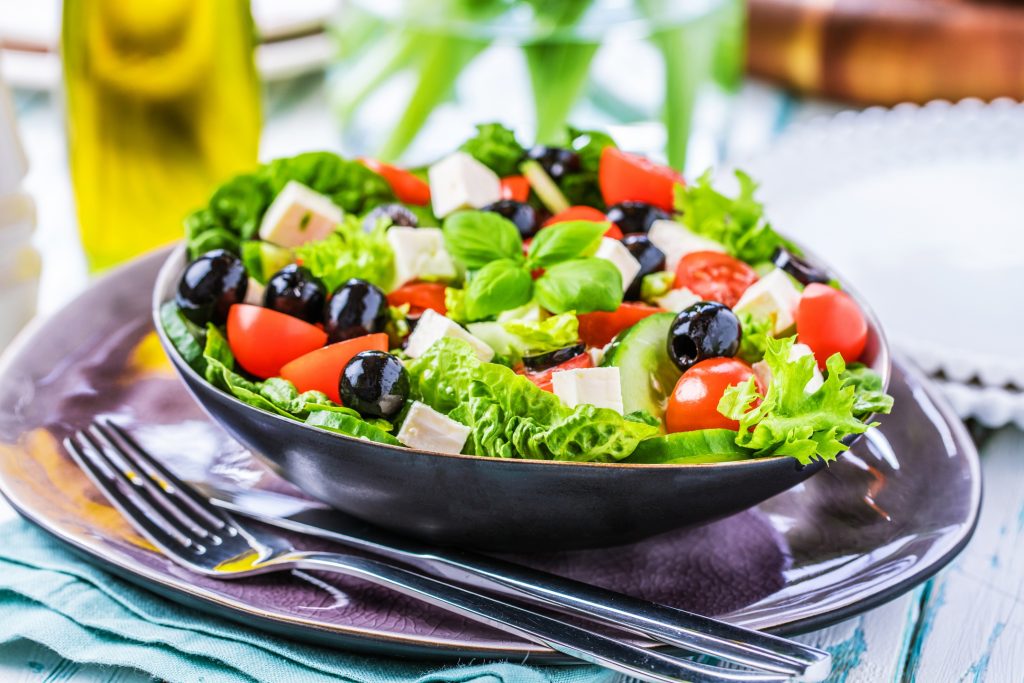
Greek olive oil is the basis of the Mediterranean Diet. As the main ingredient of every recipe found in Greek traditional cuisine, olive oil plays a dominant role in Greek nutritional habits. Greek olive oil is known worldwide for its purity, exceptional taste and high nutritional value. Besides, extra virgin olive oil is a superfood. Studies have shown that olive oil is the healthiest product among vegetable oils. It is loaded with antioxidants and protects from various diseases, therefore essential for a balanced diet! Many Greek olive oil products from various regions of the country have been registered as protected designation of origin (PDO) or protected geographical indication (PGI) the EU’s recognition system for high quality agricultural product









